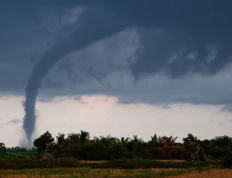



Should you experience a loss, the first thing you’ll want to know is whether your insurance policy covers the loss suffered. It’s important to confirm this and to know the amount of coverage included in your policy. If the loss is minor, it may also be wise to assess whether or not a claim is worth making.
It all depends on the type of loss incurred. Some incidents are automatically covered in most policies, while others are only covered if you’ve added coverage to your policy.
Your home insurance policy includes coverage for water damage caused by:
For the following incidents, you’ll be protected if you’ve included additional coverage in your policy:
You can also consult our article entitled 9 questions about flood insurance.
Note: This coverage includes a coverage amount separate from your policy amount. That means it’s important to assess the value of belongings that could be damaged, especially those located in the basement of your home.
Your home insurance protects you for damage and loss caused by theft and vandalism.
Your home insurance protects you for damage caused by a fire.
Damage caused by strong winds, tornadoes or hail is generally covered.
For example:
The types of damage caused by snow, cold weather and freezing rain vary greatly. Coverage depends on the nature of the damage and the type of policy taken out. It’s best to call your insurer to find out what you’re covered for.
For example:
Damage caused by an earthquake is covered if you have added the protection to your contract.
It’s important to know the amount of coverage included in your insurance policy.
Other than the amounts granted for your home or belongings, it’s good to know whether damaged or stolen property is subject to a reimbursement limit.
If you’ve added a water or earthquake damage endorsement to your policy, you’ll want to check your coverage, since endorsements come with specific coverage amounts.
Lastly, it’s important to note that the deductible applied in any claim you make is the one indicated in your policy.
All of this information will give you an idea of how much you can expect to be compensated and whether or not you should make a claim for a minor loss.
This information is also useful in deciding how the available insurance amount will be used in the case of a major loss for which the insurance amount is not enough to cover everything.












